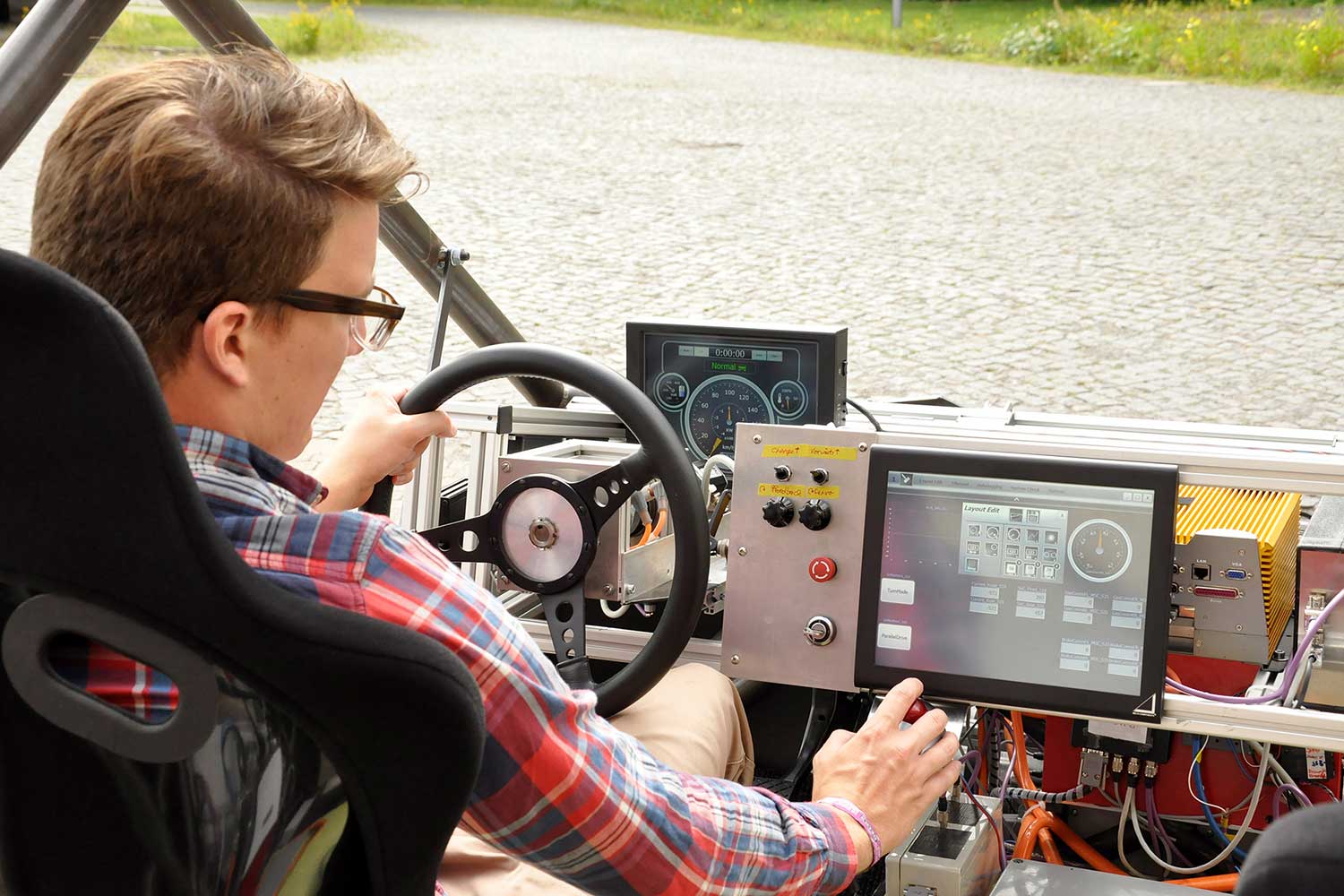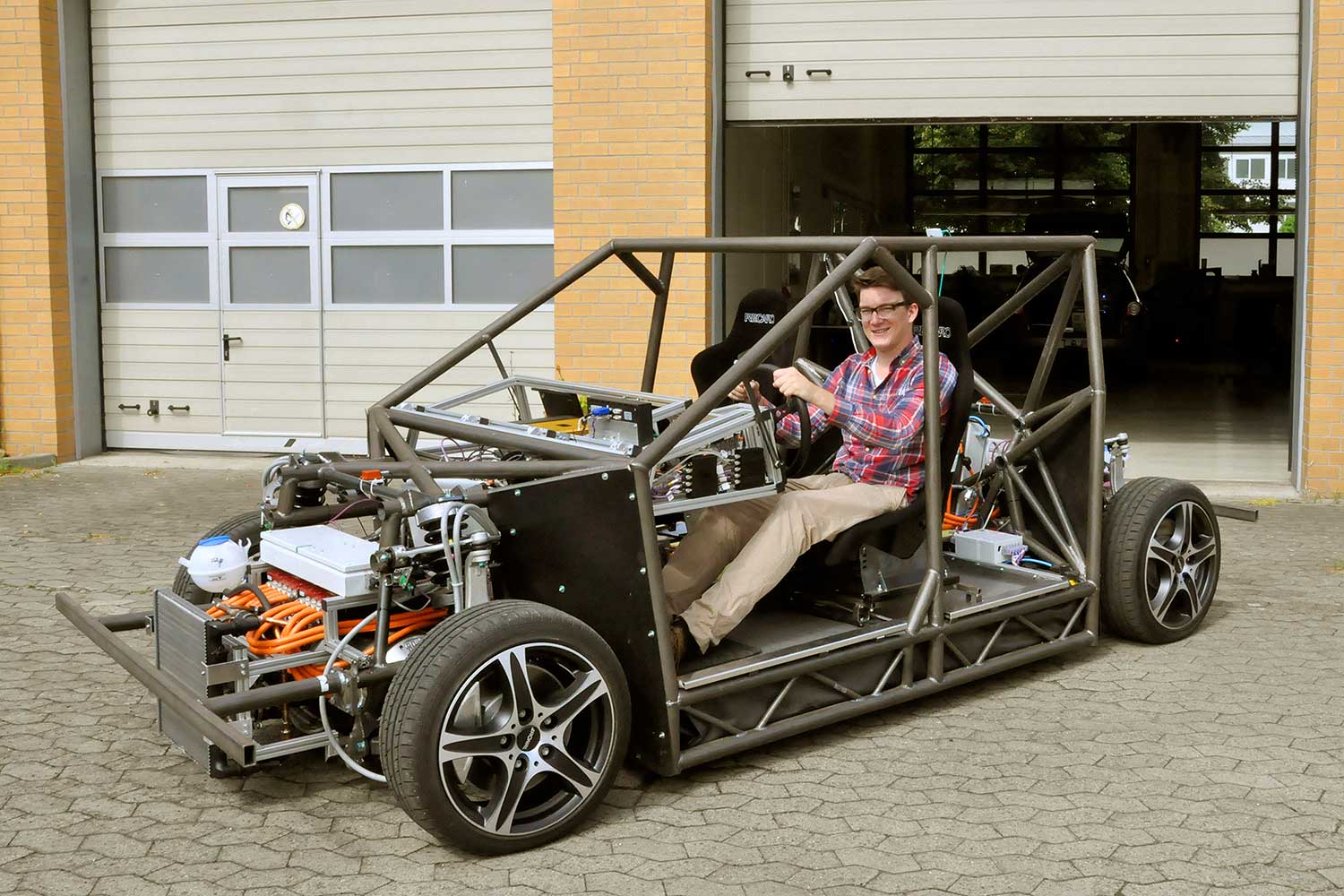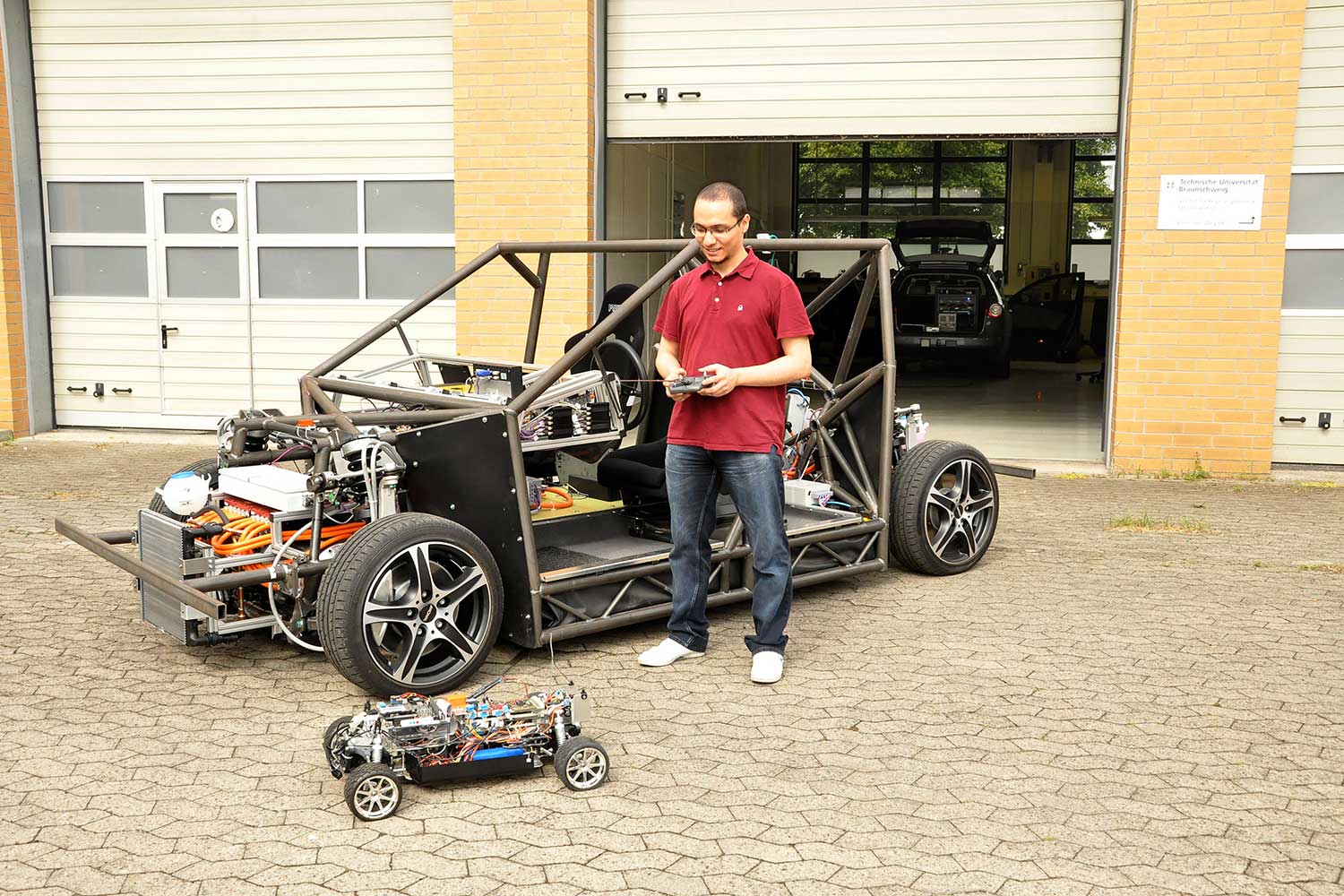How am I? On the road to a “self-aware” car Focus on Research: Self-Aware Vehicles
Even if Marcus Nolte is not particularly interested in psychology, self-awareness is a part of his research, albeit in a more technical sense. Working with three engineers and a robotics expert from the Institute of Control Engineering, he is developing systems for self-aware cars. Self-awareness in this context means that a vehicle “knows” about the status of its capabilities.

Monitors instead of a dashboard – the MOBILE vehicle is also transparent inside. Behind the “steering wheel”: Torben Stolte. Picture Credits: Kristina Rottig/TU Braunschweig
“Self-awareness is one of the basic requirements for autonomous driving”, says Nolte. To ensure that passengers reach their destinations safe and sound, the car must, at any given point in time, be able to determine whether it is fully functional on every level. If not, it must be able to look for alternative solutions. “If, for example, the car is unable to make a left turn due to a damaged steering system, it could try to find an alternative route”, the engineer explains. If there is no viable alternative, the car needs to be able to come to a stop in a safe place.
A “beach buggy” with 600 PS
The electronic car that the researchers use to test their systems resembles a beach buggy and is named MOBILE. It is made of black steel tubes and weighs around two tonnes, mainly due to its large battery pack. With its 600 PS, it can attain a maximum speed of 160 kph.
But what is really special about MOBILE is that each wheel has its own power unit and drives solely “by wire” – meaning electronically, without a steering rod or brake hydraulics. “We want to have a car where we know the systems inside out. For MOBILE, we programmed each control unit ourselves and know which data are transiting where”, says Nolte.

Torben Stolte, research and teaching assistant at the Institute of Control Engineering, behind the wheel of the MOBILE research vehicle. Picture Credits: Kristina Rottig/TU Braunschweig
It took five years to build the car, and it will probably never be “finished” in the normal sense of the term. “MOBILE is a concept vehicle. It lets us try things out that can later be transferred to other vehicles”, Nolte explains. There are very few vehicles of a similar kind in the world. One of them is at Stanford University in Silicon Valley, and the researchers from Braunschweig work in close cooperation with the team there.
So far, MOBILE drives only now and then, on a test track specially made for that purpose on the university’s grounds. The researchers spend most of their time at their desks. “We do a lot of our work on computers, programming and simulating. We then test our algorithms with MAX, a remote-controlled car only one-fifth the size of MOBILE. We drive MAX through the hallways, through the foyer, wherever there’s space”, says Nolte. Only after that do they take MOBILE out for a spin – provided the weather is right, because heavy rain and summer heat can become quite uncomfortable without a roof.
A trip to the Motorsport Arena
A definite highlight was a trip to the Motorsport Arena Oschersleben racecourse. The vehicle attracted a lot of attention there, even without roaring loudly or driving at high speeds. “We limited our speed to 55 kph for safety reasons”, says Nolte. But apparently, the design alone is an eye-catcher, even if it is not a model for future autonomous cars. “The various conceptual studies developed by car manufacturers are much better suited to that”, says the engineer with a smile.

Bashar Ibrahim, student and scholarship holder at the Institute of Control Engineering, compares the size of the MOBILE car to MAX, the practice model at a scale of 1:5. Picture Credits: Kristina Rottig/TU Braunschweig
Self-awareness in an autonomous car includes not only checks of the internal system, but also of the vehicle’s surroundings. “With the help of its technical equipment, the car must be able to map its surroundings, namely mobile and immobile objects, very precisely. And the system needs to have something akin to intuition”, Nolte explains. It must be able to predict the likely behaviour of other road users, recognising, for example, if a person is about to step out onto the road. For this, the scientists need to collect a great deal of empirical data, for example by driving other TU Braunschweig test vehicles such as Leonie, which has been approved for road testing.
“Our next goal is for MOBILE to drive reliably, stay on track and not skid in turns; in other words, to get past its growing pains”, says the researcher. “Also, it is currently learning to see. Equipped with cameras and sensors, we want the car to be able to drive autonomously.” Nolte is certain that many of the systems they are testing will go into serial production sometime in the future. “Autonomous driving is the future. And here at TU Braunschweig, we are helping to contribute our part.”
Text: Andrea Hoferichter
